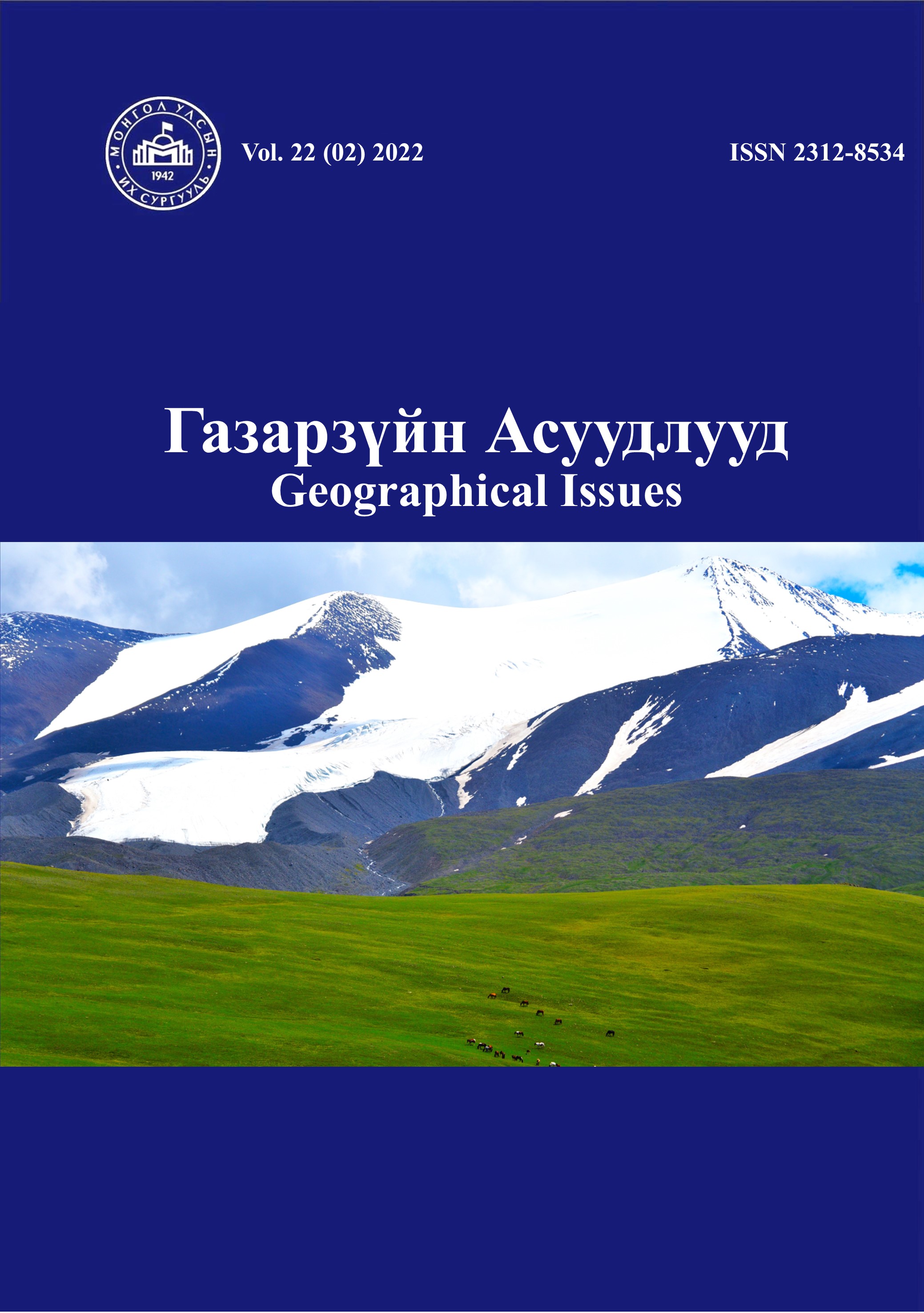Spatiotemporal variations of Vegetation change and its response to Climate change in Mongolia during 1982-2015
Монгол орны ургамлын бүрхэвчийн цаг хугацаа, орон зайн өөрчлөлтийн онцлог, уур амьсгалд үзүүлсэн нөлөөлөл (1982-2015)
Keywords:
NDVI, Vegetation type, Air temperature, Precipitation, Spatial and temporal evolution characteristicsAbstract
Using GIMMS NDVI growing season (April-October) data from 1982-2015, mean temperature and monthly precipitation data from 60 meteorological station observations for the same period, the vegetation cover change and climate change in the Mongolian region and its response were studied with the help of linear trend analysis and Pearson correlation method the relationship between vegetation cover change and climate change in Mongolia and its response was studied using linear trend analysis, Mann-Kendall trend analysis and Pearson correlation. The results show that the average NDVI of the growing season in Mongolia has gradually increased spatially from south to north over the past 34 years. Seasonally, there was an overall increasing trend of NDVI in all three seasons, and the influence of precipitation on vegetation NDVI was greater than the influence of temperature on it. Different vegetation types responded more to precipitation than to temperature, and alpine grassland vegetation significantly affected air temperature and precipitation.
Downloads
Downloads
Published
How to Cite
Issue
Section
License

This work is licensed under a Creative Commons Attribution-NonCommercial-ShareAlike 4.0 International License.






